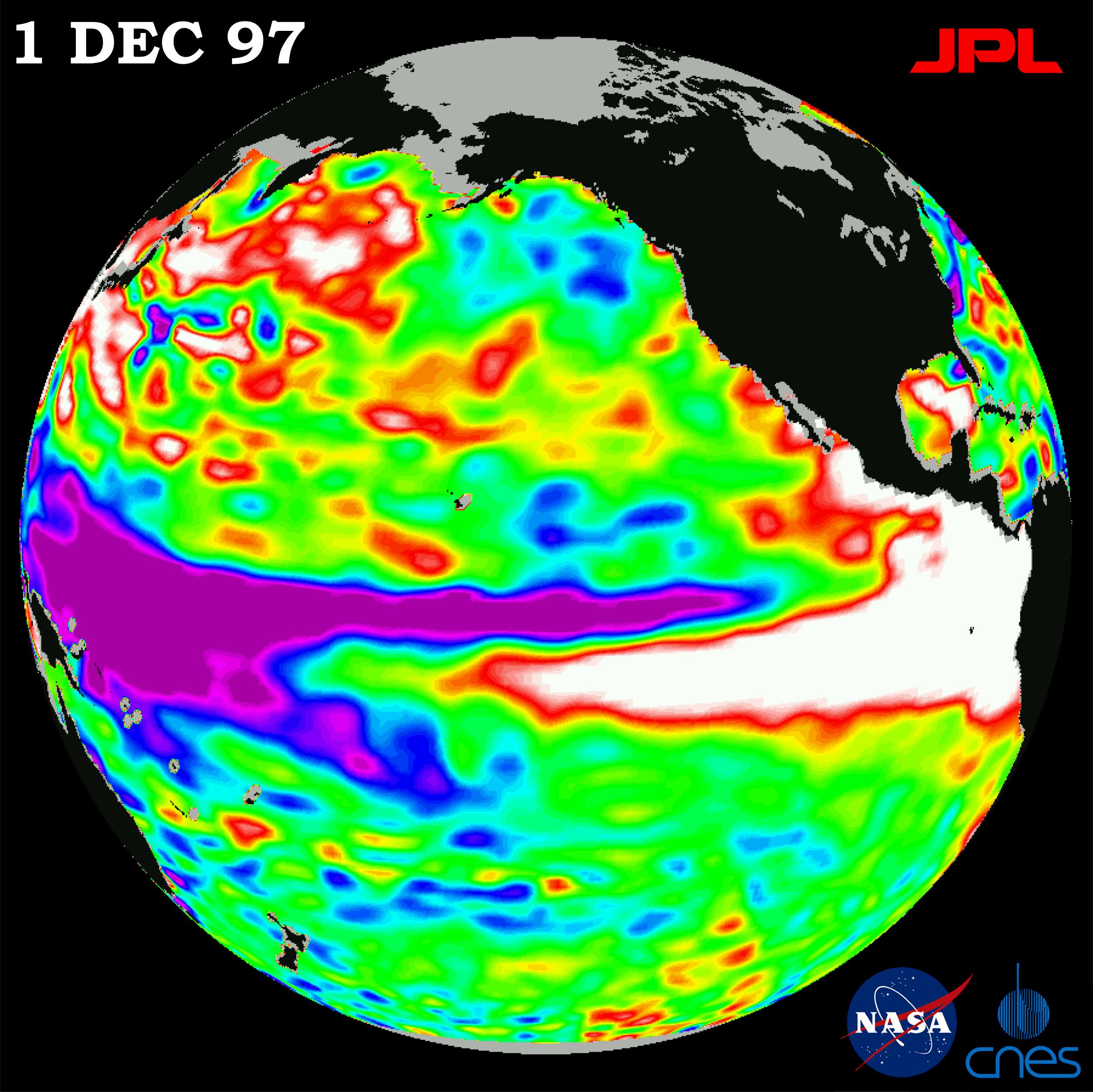Science News
Blame it on El Nino

Can weather affect behavior? Social scientists have shown that individuals often become more aggressive when temperatures rise, but scientists have had a difficult time finding evidence to apply that theory to entire societies.
In 2009, a paper in the Proceedings of the National Academy of Sciences by UC Berkeley researchers found that African conflicts rose during warmer years, but the methods behind this theory were highly criticized.
However, that study led Solomon Hsiang of Columbia University to dive deeper into past climate data and civil conflicts. Because there is clear data from the past several decades for the cycle known as the El Niño-Southern Oscillation, or ENSO, a periodic warming and cooling of the tropical Pacific Ocean, Hsiang and his colleagues started there.
Interacting with other factors including wind and temperature cycles over the other oceans, El Niño can vary dramatically in power and length. At its most intense, it brings scorching heat and multi-year droughts to tropical nations. (In higher latitudes, effects weaken, disappear or reverse.)
The team tracked ENSO from 1950 to 2004 and correlated it with onsets of civil conflicts that killed more than 25 people in a given year. The data included 175 countries and 234 conflicts, over half of which each caused more than 1,000 battle-related deaths. For nations whose weather is controlled by ENSO, they found that during La Niña, the chance of civil war breaking out was about 3 percent; during El Niño, the chance doubled, to 6 percent. Countries not affected by the cycle remained at 2 percent no matter what. Overall, the team calculated that El Niño may have played a role in 21 percent of civil wars worldwide.
Co-author Mark Cane says that the study does not show that weather alone starts wars. “No one should take this to say that climate is our fate.”
“But if you have social inequality, people are poor, and there are underlying tensions, it seems possible that climate can deliver the knockout punch,” says Hsiang. When crops fail, people may take up a gun simply to make a living.
Bad weather does appear to tip poorer countries into chaos more easily; rich Australia, for instance, is controlled by ENSO, but has never seen a civil war. On the other side, Hsiang said at least two countries “jump out of the data.” In 1982, a powerful El Niño struck impoverished highland Peru, destroying crops; that year, simmering guerrilla attacks turned into a full-scale 20-year civil war that still sputters today. Separately, forces in southern Sudan were already facing off with the domineering north, when intense warfare broke out in the El Niño year of 1963. The insurrection abated, but flared again in 1976, another El Niño year. Then, 1983 saw a major El Niño—and the cataclysmic outbreak of more than 20 years of fighting that killed 2 million people, arguably the world’s bloodiest conflict since World War II. It culminated only this summer, when South Sudan became a separate nation; fighting continues in border areas. Hsiang said some other countries where festering conflicts have tended to blow up during El Niños include El Salvador, the Philippines and Uganda (1972); Angola, Haiti and Myanmar (1991); and Congo, Eritrea, Indonesia and Rwanda (1997).
This current report, published in Nature, is not without its critics, of course. But Science News has this quote:
“I’m one of those people who would be generally skeptical about correlating things to climate,” says statistician Andrew Solow of the Woods Hole Oceanographic Institution in Massachusetts. But the new report’s finding makes sense, he says: In poor countries where the economy is closely linked to agriculture — and therefore the weather — poor harvests and diminishing food supplies can leave large numbers of people available to engage in civil uprisings.
So while the study is careful not blame specific wars on El Niño nor directly address the issue of long-term climate change, it does raise potent questions, as many scientists think natural weather cycles will become more extreme with warming climate, and some suggest ongoing chaos in places like Somalia are already being stoked by warming climate.
Scientific American reports:
“At a minimum, national governments and international institutions should be ready for such events,” says [co-author] Kyle Meng…
But:
… forewarned does not mean forearmed. Researchers predicted the present famine in the Horn of Africa more than two years ago and yet nothing was done. “It was not until the famine and violence actually began that donors began supplying the resources needed,” Hsiang notes.